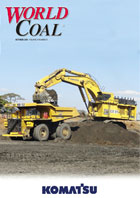Editorial comment
Whether you’re a fan of the traditional pizza Margherita or prefer something a little more exotic (chocolate pizza, anyone?), the chances are that your local pizzeria wouldn’t be your first port of call when looking for some good news from the coal industry. But had you walked on past the pizza oven, you would have missed news of a resurgence in coal-fired power that is taking place unnoticed by environmental regulators.
Register for free »
Get started now for absolutely FREE, no credit card required.
So for those of you that did miss it: apparently coal makes really good pizza. Or rather coal-fired pizza ovens do. And there’s a growing demand for such ovens in the US, leading to a sharp uptick in demand for the anthracite that fires them. What makes coal-fired pizza so good? According to Fred LeFranc, founder of Results Thru Strategy, a restaurant adviser in Charlotte, North Carolina, it’s all about the flavour.
“It’s the difference of having a steak cooked over a gas grill verses charcoal,” LeFranc told Mario Parker and Leslie Patton of Bloomberg, who first reported the story. “You get this really great smoky flavour [from coal].” And while demand from pizza makers is tiny compared to total US coal demand (let alone global demand), there’s a couple of lessons that can be drawn out from this tasty success story.
Firstly, the anthracite industry in general deserves a second look. Blaschak Coal – the company that supplies Anthony’s with its coal – is prospering. And there aren’t many US coal companies that you can say that about at the moment. And it’s not just on the back of demand from pizza ovens: anthracite is a speciality mineral with applications as diverse as steelmaking, water filtration, urea manufacture and plastics and industrial chemicals production – and it is currently in short supply.
“Whilst hard coking coal markets are in oversupply, anthracite markets are undersupplied,” Atrum Coal, the developer of an anthracite mine in British Colombia, Canada, said in a recent update. As a result, prices for high-grade anthracite are up between US$150 and US$175 per tonne in Europe and Japan – a considerable premium compared to hard coking coal.
But the anthracite industry was not always so rosy and has had to significantly reinvent itself from its heyday in the early twentieth century – which brings us to the second lesson, one that was delivered in a keynote address at the Platts Coal Marketing Days event in Pittsburgh by Blaschak’s President and CEO, Greg Driscoll.
“You can’t sit there and expect what’s always been there to continue being there,” Driscoll told SNL Financial just before his keynote speech, adding that he could “very easily” paint a picture of a future without coal in the power mix. The key is to be ahead of the curve rather than letting “the curve kick you in the butt”.
The global energy landscape is changing. In some places – the US, Europe and potentially China – that change is rapid and structural, making a return to the status quo ante unlikely. The coal companies that learn to adapt to (or even better to anticipate) the new world in which they find themselves will survive – even prosper. BHP Billiton has recently led the way here, releasing its assessment of how a global climate change agreement that limited temperature change to 2°C could impact its business to 2030.
Unsurprisingly, thermal coal takes a hit under BHP Billiton’s global-agreement scenario with demand falling from current levels. But not by much, leading the mining giant to conclude that “additional quantities of energy coal are likely to be required to meet the world’s energy needs”.
And that’s the true wisdom of the pizza oven. Even when times are hard, opportunity exists – albeit not necessarily where you expect it to be.


